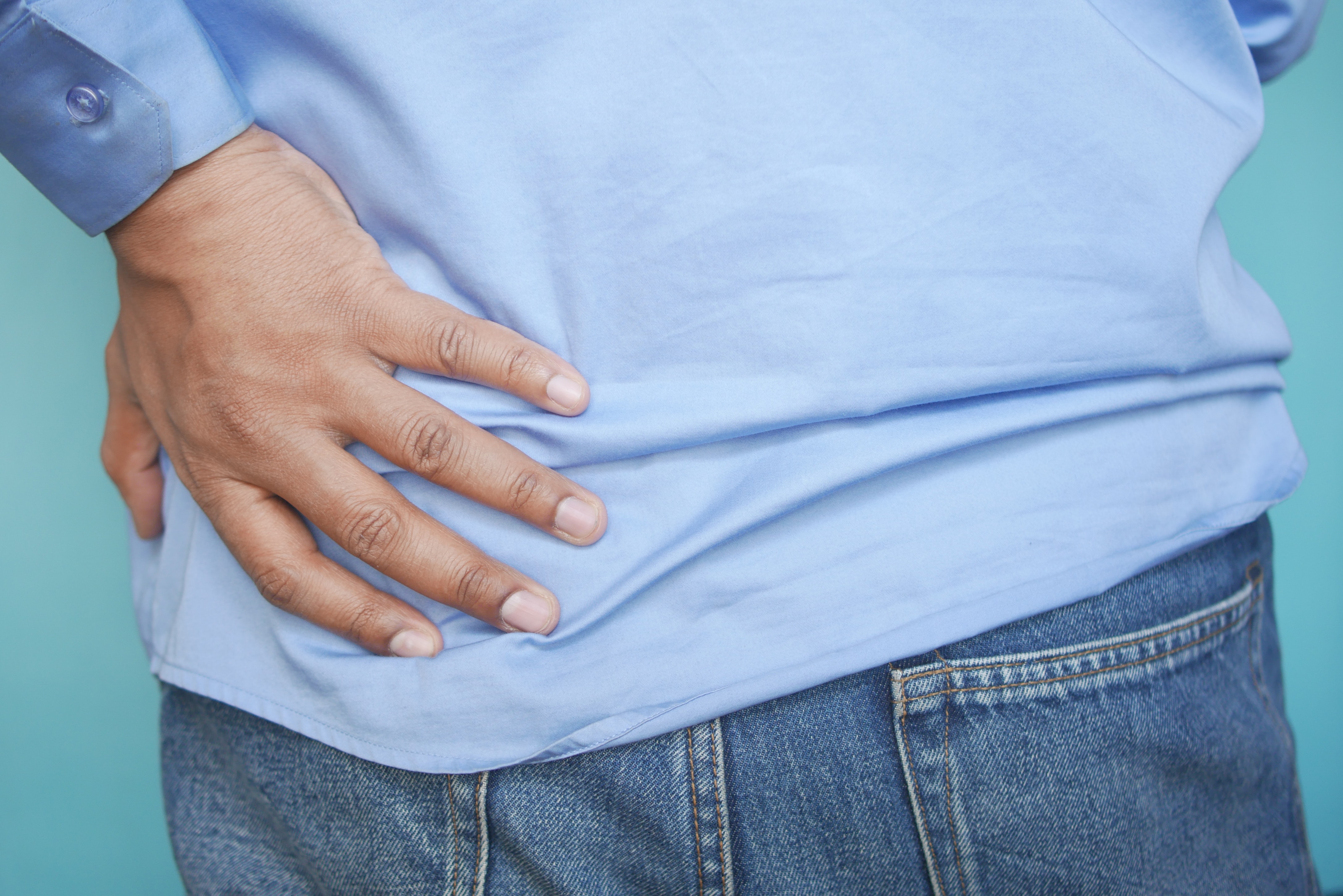Nerve pain can be the most challenging forms of physical sensations to explain. The compression of nerves can have many descriptions: searing, “zinging,” or irritable feelings caused by a pinched nerve. A common nerve disruption is located in the hip region featuring a disturbance around the sciatic nerve. For readers who have experienced sciatic nerve pain, one could agree that sciatica can make our everyday life activities a “pain in the butt.”
Let’s introduce ourselves to the LPHC. Better known as the lumbopelvic hip complex, this is a term exercise physiologist nerds use when referring to the muscles, bones, ligaments, and nerves correlating with the lower back, hip, and upper thigh region.
The “lumbo” portion refers to the vertebrae of the lumbar spine. A vertebra is a spine bone that encases the spinal cord. These uniquely shaped bones have various spinal root nerves budding out from the side, which innervate organs and the skeletal muscle attached to the nerves junction point. One could say these nerves act as highways of electrical signals relaying messages from our brain to body organs. The lumbar vertebrae are unique due to their sizeable bulky structure compared to its neighbors, the thoracic and sacral spines which aren’t as structurally dense. These five lumbar vertebrae reside smack dab in the middle of the body. So they need to be thick and robust to carry the load of our torso over our hips.
“Pelvic” refers to the pelvis region of the LPHC. The pelvis includes the sacrum and the fused bones of the pelvis including the ilium, ischium, and pubis. The sacrum is a collection of spinal vertebrae fused to create the triangle bone attached to the lumbar spine’s fifth and last lumbar vertebrae. Similar to the lumbar vertebrae, the sacrum possesses small tunnels allowing nerves stemming from the spinal cord to travel through the hip joints and down the legs to innervate the lower extremities. The triangular bone of the sacrum acts as a key stone in which the boney crests of the ilium and what Yoga instructors refer to as the “sits bone,” the ischium, are fused too.
Lastly, we have the “hip” portion of the LPHC. The hip joint is a sophisticated structure that makes a ball and socket joint. The fusion of the ilium, ischium and pubic bone come together at one point to form this socket, allowing the knobby head of the femur to fit into. The combination of this ball and socket joint and the head of the femur makes the hip joint. A vast array of muscles, tendons, and ligaments connect, intersect, and overlap to allow for the integration of the unique movement of the hip.
So, why is it important to know about the LPHC and sciatica? First, let’s make one last introduction to a network of nerves that form a braid called the “cauda equina.” Latin for “horse tail,” the cauda equina is a collection of nerves stemming from the lumbar vertebrae. When viewing an anatomical image of the body, it indeed looks like a horse’s tail draping over the back of its hips. This collection of nerves innervates organs within our abdomen and muscles of the hip, knee, and ankle joint. In connection with innervating the lower extremities, we have the cauda equina’s roommate, the sciatic nerve. The sciatic nerve is an extension cord-sized nerve stemming from the lumbar and sacral vertebra that passes through the hip joint. Its job is also to innervate skeletal muscles of the hip, knee, and ankle joint. Appreciating this body region is key to mitigating the beginning periods of sciatica and recovering from chronic cases of sciatica.
The network of muscles, tendons, ligaments, and nerves residing in the LPHC create a masterpiece of integrating nervous signaling and the conduction of various muscles firing at one time, allowing us to stand upright, rotate our torso, and move our legs in multiple ranges of motion. If this region is damaged, the integration of these coordinated movements can become flawed, resulting in weakness, pain, and a decreased lean muscle mass around the LPHC. The muscles connecting the lumbar spine to the pelvic region maintain the integrity of the vertebrae connecting the lower back to the hips. The muscles around the hip keep the ball and socket joint in a neutral position and protect the hips from rubbing against the hip joint’s insertion point on the sciatic nerve. Therefore, knowing the architecture of this region and understanding the muscles involved in keeping the LPHC in alignment aids us in staving off pain, decreased movement, and nerve damage.
In next week’s article, we’ll introduce ourselves to the muscles attaching to LPHC. After we formally greet these muscles, we’ll find out what exercises these muscles enjoy doing that make them develop into solid and active motors to keep our spine and hips strong, healthy, and able to manage pain.
Sean McCawley, the founder and owner of Napa Tenacious Fitness in Napa, CA, welcomes questions and comments. Reach him at 707-287-2727, napatenacious@gmail.com , or visit the website napatenaciousfitness.com.

